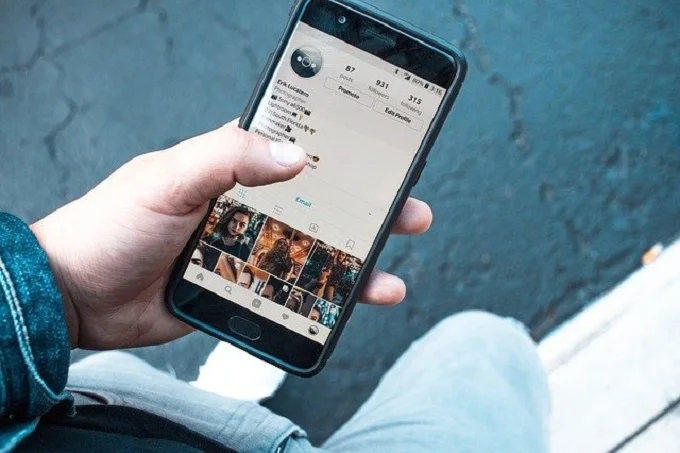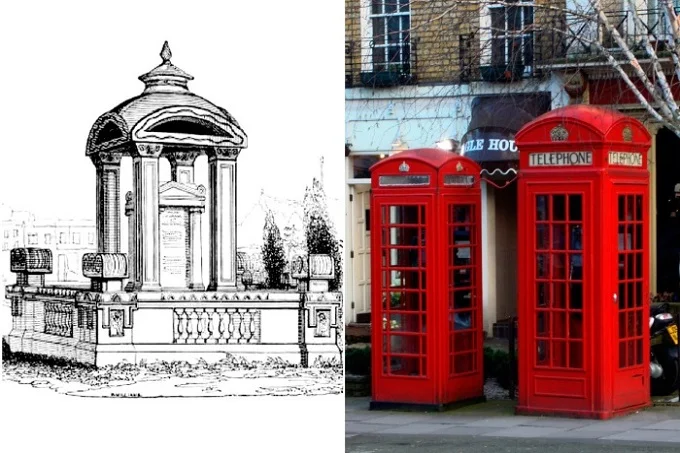From Simon to iPhone: how smartphone evolved for the past 25 years

Exactly 25 years ago the first ‘smartphone’ was on the shelves: a black, log box with a monochrome screen that you could use to call and e-mail. Since then, developments have followed each other quickly – the first cameras, larger screens, and extra gadgets to make life easier for us.
An Overview
First-ever ‘smartphone’: IBM Simon Personal Communicator (1994)
In 1992, IBM demonstrated the ‘Angler’ to the world for the first time: a combination of a telephone and a PDA (a ‘personal digital assistant’) in one device. Two years later – on August 16, 1994 – the device was marketed as the “IBM Simon Personal Communicator.” By the way, IBM never called the device ‘smartphone’, because that term simply did not exist at the time, but it is clear that the Simon did lay the foundation for the smartphones that we know today.
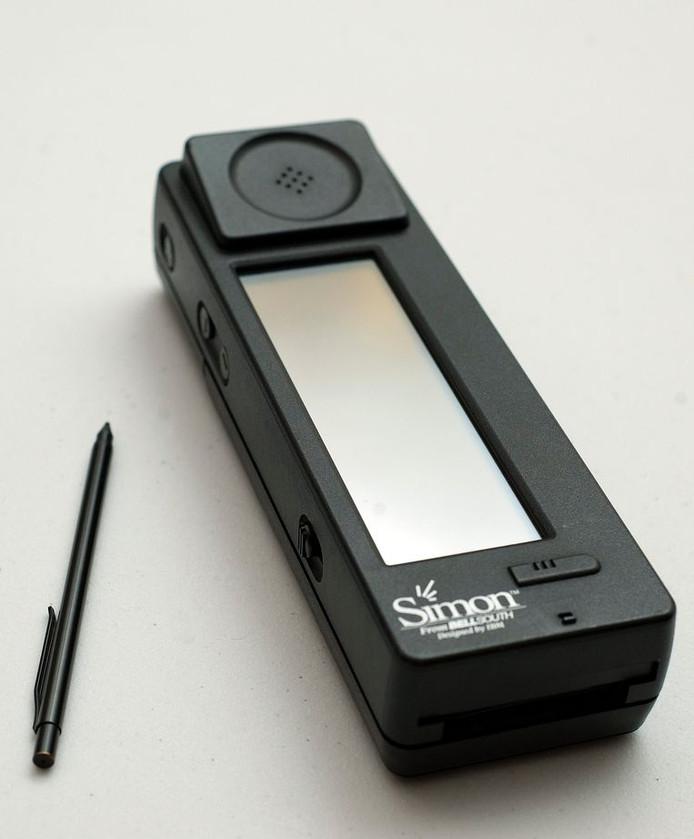
With the inelegant box you could call, e-mail, fax, but also view maps, follow stock market news and read the newspaper. All of that happened on a black-and-white screen, which you could already operate with a stylus. There were also some standard ‘apps’ on the device that were then called ‘features’, including a calendar, address book, clock, to-do list, and a calculator.
The whole thing weighed a little more than half a kilo, had only 1 MB of storage space and lasted about one hour without a power outlet. Nevertheless, Simon was far ahead of his time. Some 50,000 copies were sold in the United States at a suggested retail price of $1,099 – that is, $1,663 with inflation.
The trendsetter: Nokia 9000 Communicator (1996)
It took a while for the Simon concept to catch on, but in the mid-nineties, various competitors came up with their own telephone and mini-computer. In 1996 Nokia released the 9000 Communicator, a revolutionary device for calling, browsing and faxing. The ‘smartphone’ came with 8 MB of storage space and had a series of business programs on board, including a word processor.
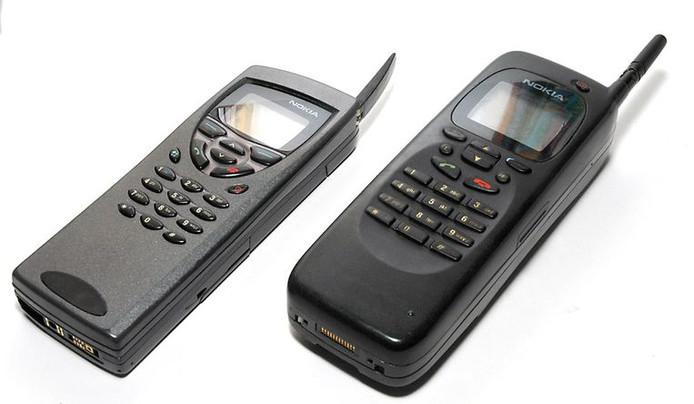
Again the device was equipped with a black and white screen, but this time there is also a full keyboard – a bit like the BlackBerrys that would breakthrough a few years later. The Nokia 9000 Communicator was slightly lighter than the IBM Simon but still clocked out at almost 400 grams. In the United Kingdom, you paid 1000 pounds for a copy.
The advance of the BlackBerry: BlackBerry 850 (1999)
The first BlackBerry was developed in 1999. The device was actually a glorified pager at the time but was able to send e-mails and surf the internet. The iconic keyboard lent its name to the series: according to the maker, the buttons were reminiscent of a blackberry.

Only in 2002 did a BlackBerry come out with which you could make calls: the BlackBerry 5810. Strangely enough, however, there was no speaker or microphone incorporated in the device, so you still needed a headset to effectively hold a telephone conversation. Only later came the built-in speakers and color screens, making BlackBerry nestled as the darling of many business users.
Beginning of the selfie age: Kyocera VP-201 (1999)
It was not until the late 1990s that the first telephones with a camera were released in the world. According to most sources, the title of the very first commercially available camera phone goes to the Kyocera VP-201, a device that was released in 1999 in Japan. A huge 0.11 MP camera adorned the front of the phone, which was primarily intended for video calls but was also capable of taking photos.
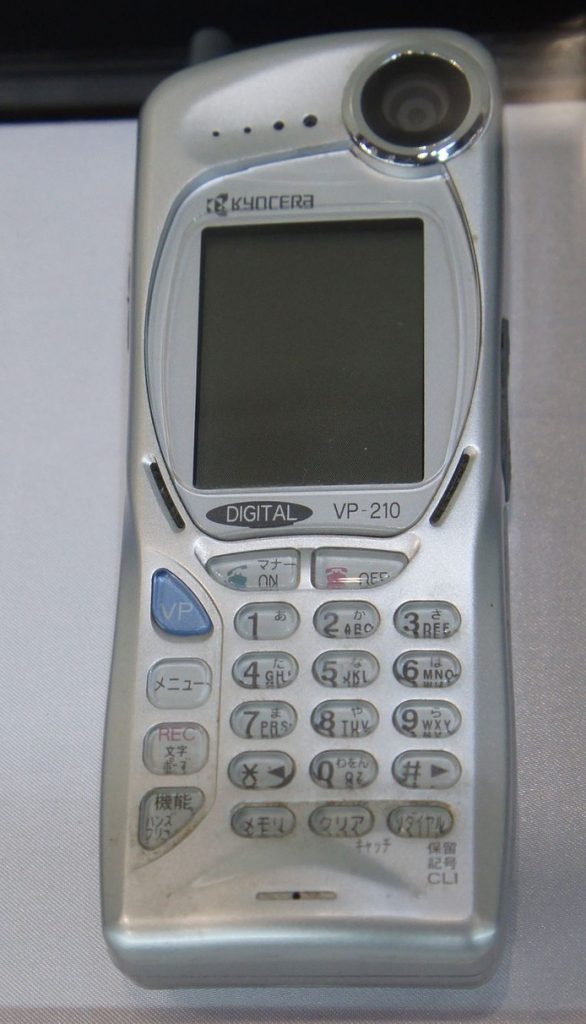
The device was followed a year later by the Samsung SCH-V200 in South Korea. The phone had a slightly better camera with a 0.35 MP lens and could store up to twenty photos. Those images could also be forwarded via e-mail, although the phone had to be connected to a PC.
‘One more thing’: the first iPhone (2007)
And then suddenly there was the iPhone: an iPod, a telephone and a revolutionary “internet communication device” in one, as Steve Jobs described it. The moment a typical mobile phone wasn’t much more than a brick with a keyboard and a camera, Apple came up with an elegant design that revolved around a strikingly wide touchscreen.

The iPhone came with fifteen fixed apps (the App Store was only introduced a year later) including a calendar, weather app, calculator, notebook and a mobile version of browser Safari. The device had one 2 MP camera lens on the back and was provided with 4 GB or 8 GB storage space. All of that was accompanied by an unseen price tag: the basic version with 4GB cost 499 dollars.
The entry of Android: HTC Dream (2009)
Although Apple was rapidly emerging as one of the most popular smartphone makers in the world, the majority of smartphones are not iPhone. After all, there are many more people around the world with an Android phone – about 2.5 billion according to Google, to be precise.
The very first smartphone that ran on Android, however, was nothing special. The HTC Dream (better known in the US as the T-Mobile G1), for example, still used a physical keyboard and a scroll button. There was also a 3.15 MP camera onboard, as well as 256 MB of storage space and a slot for an extra microSD card.

The then brand new operating system Android was carefully received positively. “Android shows itself on this device as a great promise for the future. Although the processor is not faster and there is no more memory than on competing devices, the user gets the feeling with Android that they can work smoothly, smoother than on comparable devices equipped with Symbian or Windows Mobile,” Tweakers.net wrote at the time about the HTC Dream.
They were right. Operating systems such as Symbian – used primarily on Nokia devices – and Windows Mobile from Microsoft have collapsed shortly thereafter, while Android is still in control.

